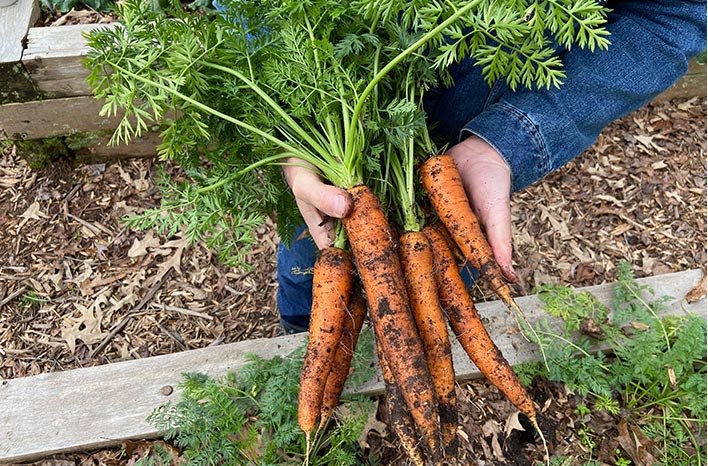Are you looking for an easy-to-grow carrot that’s both full of flavor and good for beginners? ‘Danvers’ carrots may be what you’re looking for this spring. In this article, horticulture expert Matt Dursum covers how to plant, grow, and care for this wonderful variety.
Danvers carrots are gorgeous, deep-orange carrots that are perfect for beginners. They’re one of my top picks to grow because of their amazing flavor, natural sweetness, and how low-maintenance they are. They’ll do well in pretty much any soil.
These carrots were bred for their vibrant orange color, great shape, and high yield. They’re one of the most popular carrot varieties in the U.S., especially in warm areas with hot summers. If you live somewhere like Southern California, you’ll definitely want to add Danvers to your spring planting list.
In this article, plant expert Matt Dursum walks you through how to plant, grow, and care for these delicious root veggies. With just a little effort, you can have a fantastic harvest in your garden this year.
What Is It?
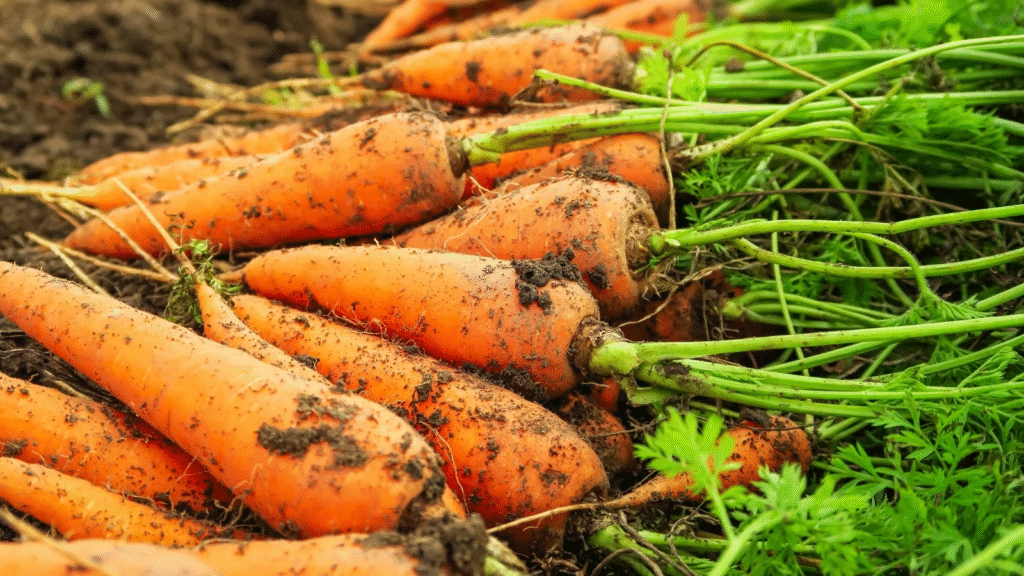
A bunch of freshly pulled orange taproots with pointed ends sits on the ground, still attached to their leafy green tops with delicate, fern-like leaves.
They grow like champs, even when summer turns up the heat.
Danvers carrots are beautiful, deep-orange carrots with a moderate size. They’re juicy, sweet, and packed with that classic carrot taste. Plus, they’re one of the easiest root vegetables to grow, especially in sunny spots with hot summers.
Characteristics
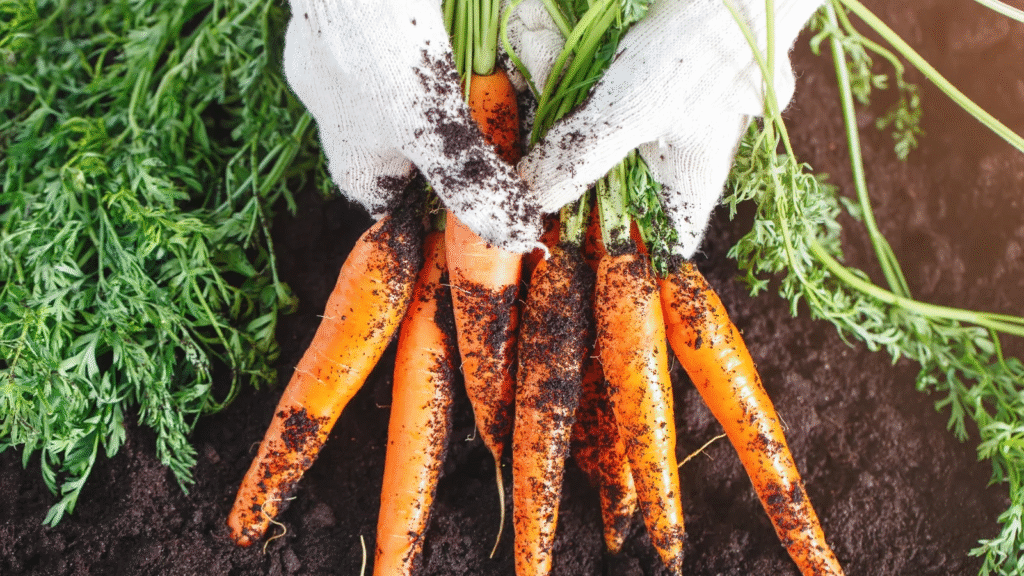
A close-up of a gardener’s hands in white gloves holding a bunch of bright orange carrots with lush green tops, soil still clinging to the roots.
Sweet roots below, tasty greens above—perfect for pesto!
These carrots grow about 1 foot tall when mature, with roots reaching up to 7 inches long. They have a stunning orange color, a nice thickness at the top, and a narrow, tapered tip.
They love full sun and handle heat and frost like pros. They’ll grow in all kinds of climates and soils—even compacted dirt, unlike other carrot varieties. However, the roots can get a bit pithy in really hot summers.
The foliage is edible and great in salads, soups, and pesto. If left to flower, they produce clusters of white blooms that attract helpful pollinators like parasitic wasps, soldier beetles, and bees.
These carrots are packed with vitamin A, fiber, and other nutrients. They have about 6 grams of carbs and 3 grams of sugar (or more) per serving.
Native Area
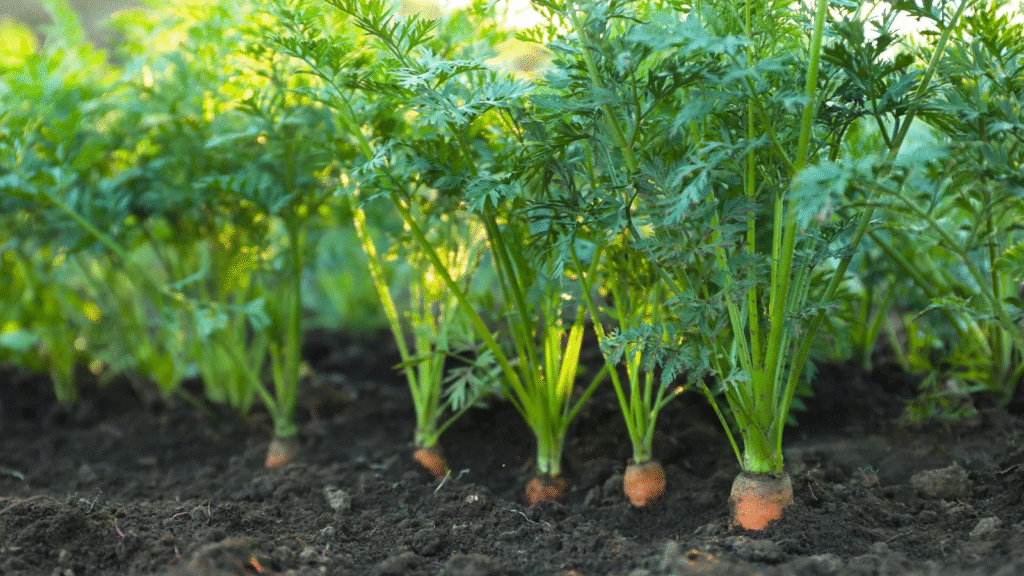
Bright orange roots grow deep in the soil, topped with delicate, fern-like leaves and tall, pale green stems.
Productive and loved from Europe to American dinner plates.
Carrots originally came from Asia, where they were bred from wild carrots and Mediterranean subspecies. In the 16th century, Dutch horticulturists developed the first bright orange carrots we know today.
By the 17th century, Europeans brought carrots to the Americas, and soon, they were grown all over the colonies. In the 1960s and 70s, carrots became a staple in the American diet and were a key part of Victory Gardens during WWI and WWII.
In the late 1800s, horticulturists in Danvers, Massachusetts, created the first Danvers varieties—bred to be productive, sweet, and easy to grow. Today, you’ll find them in grocery stores, farmers’ markets, and as seeds online or at garden centers.
Planting
Growing Danvers carrots is super simple. Just grab some seeds, good soil, and a sunny spot. They’ll thrive in most U.S. climates with barely any fuss.
Transplanting
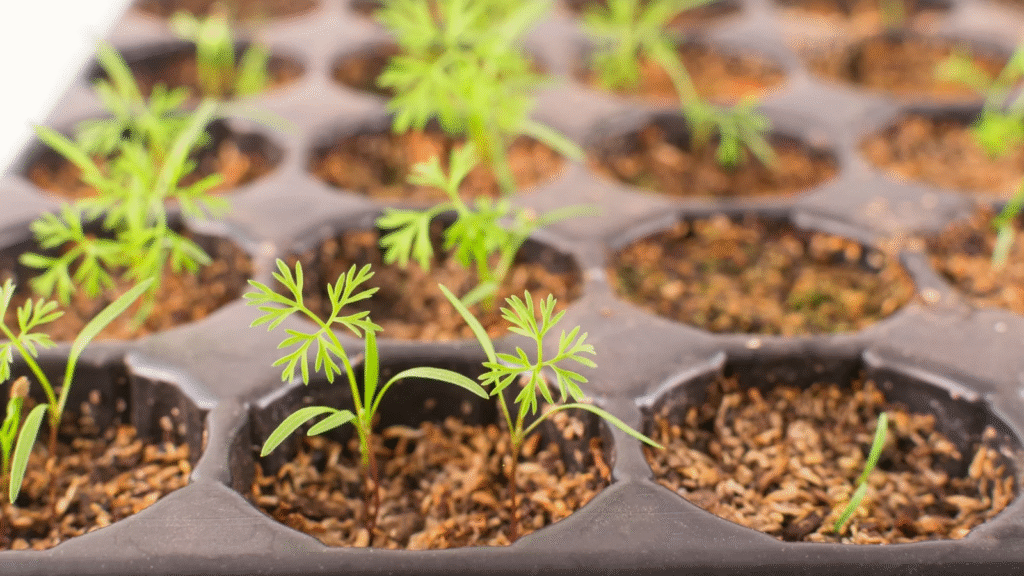
Carrot seedlings with thin green sprouts and feathery leaves grow in neat rows inside a black seed tray.
Transplanting is tough on them—let them grow where you sow them.
Because of their long taproot, carrots don’t transplant well. It’s best to sow them directly in the ground or in containers. If you try moving them, they’ll usually struggle.
Growing From Seed
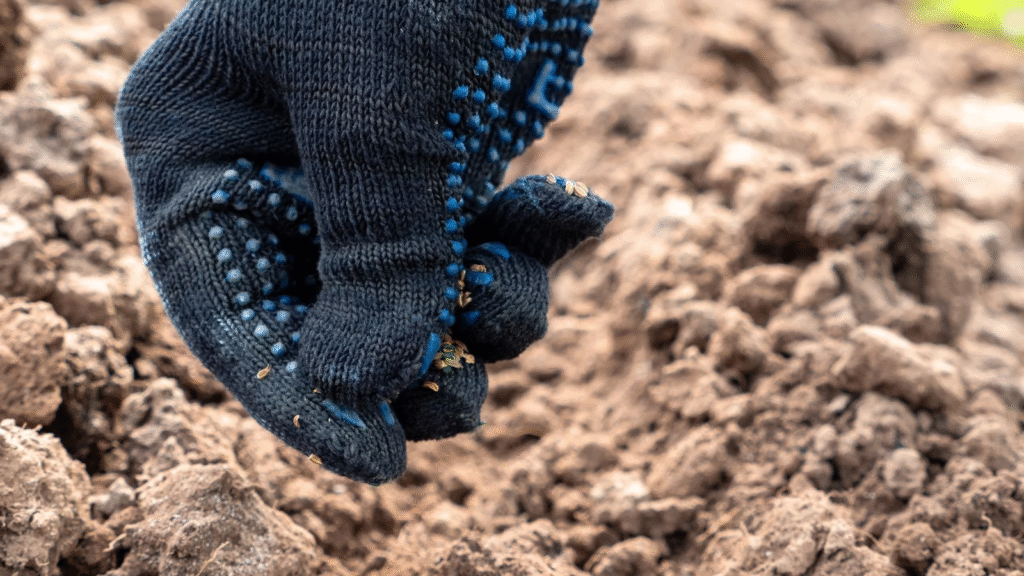
A close-up of a man’s hand in a dark blue glove dropping tiny brown seeds into loose, gray-brown garden soil.
Plant in succession for a steady harvest all season.
Start with fresh Danvers seeds (less than a year old). Sow them outside in well-drained soil 2–4 weeks before your last frost date (check the Old Farmer’s Almanac for your area).
Wait until the soil is at least 45°F (7°C). Plant seeds ¼ inch deep, spacing them 1 inch apart, with rows 6 inches apart. Cover lightly with soil and water gently until moist.
Once seedlings reach 1 inch tall, thin them to one plant every 3 inches.
For continuous harvests, try succession planting—sow new seeds every 3–4 weeks during cooler growing seasons. This way, you’ll have fresh carrots well into fall or even winter in mild climates.
How to Grow
These carrots are super easy to grow. Once they’re settled in, they pretty much take care of themselves. Here’s how to get the best results:
Light
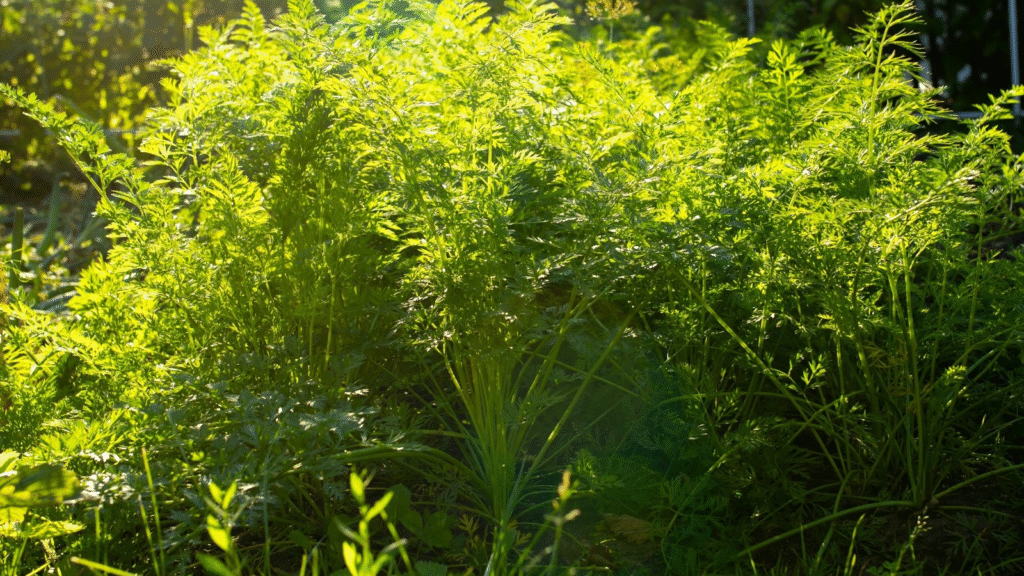
Carrots growing in a sunny garden bed, their bushy green leaves and sturdy stems poking through the soil.
Sunshine is key for the best growth and flavor.
Danvers love full sun (at least 6 hours daily). They can handle a bit of afternoon shade in hot areas but won’t grow well in full shade. Avoid planting near tall plants like sunflowers that might block their light.
Water

A metal watering can sprinkles water over a garden bed filled with lush, finely divided carrot leaves.
Keep the soil evenly moist—too much water causes problems.
Water enough to keep the soil moist but not soggy. Overwatering leads to forked roots and diseases like root rot.
Drip irrigation or soaker hoses work great. Letting the soil dry out too much can mess with their growth.
Soil

Bright orange carrot tops peek out from the soil beneath bushy green leaves with feathery stems.
Raised beds give their roots room to stretch.
Plant in loose, well-drained soil mixed with organic compost. The more sand in the mix, the better.
Raised beds (like these from Birdies Beds) are ideal—they give roots plenty of space.
Once plants are growing, add mulch to keep moisture in and protect soil microbes.
Temperature & Humidity
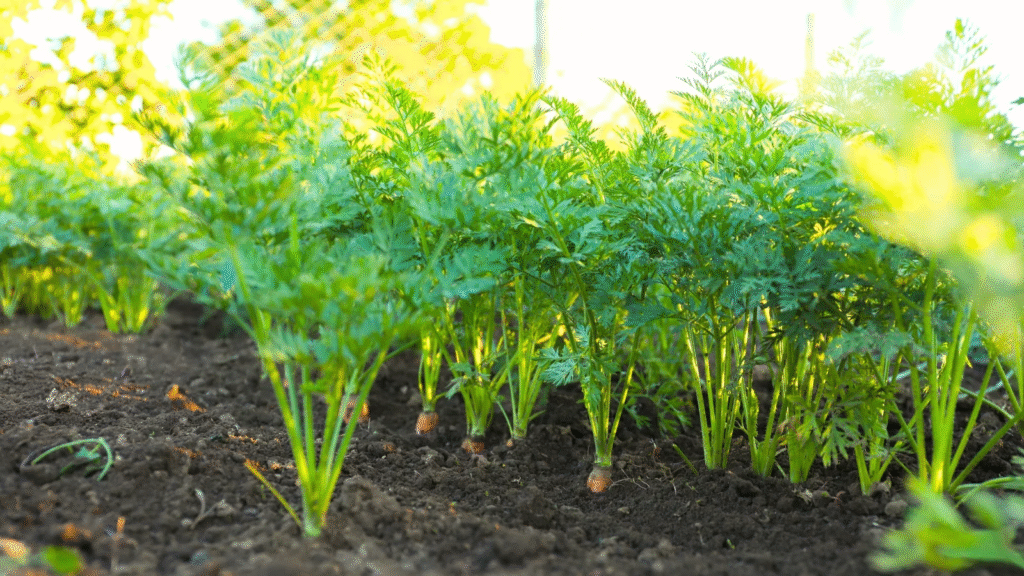
Thick, pointed roots push through the dirt, topped with lacy green leaves on sturdy stems.
They handle heat and light frost like champs.
These carrots can take heat and cold extremes once established. In mild climates, they’ll even grow through light freezes.
Plant when soil hits 45°F (7°C) or warmer. Unlike some carrots, Danvers can survive temps over 80°F (27°C), making them great for hot regions like Southern California and Florida. Still, they grow best in milder seasons.
Fertilizing

A woman’s hand in a blue glove sprinkles white granular fertilizer around lush green carrot tops.
Only fertilize once plants are over 4 inches tall.
In spring and fall, mix organic compost into the soil. Once carrots are 4+ inches tall, you can use a high-nitrogen fertilizer (like this one).
Water well after fertilizing to help nutrients soak in. Never apply fertilizer directly to plants—it can burn them.
Follow the fertilizer instructions carefully. Too much can ruin your harvest.
Maintenance
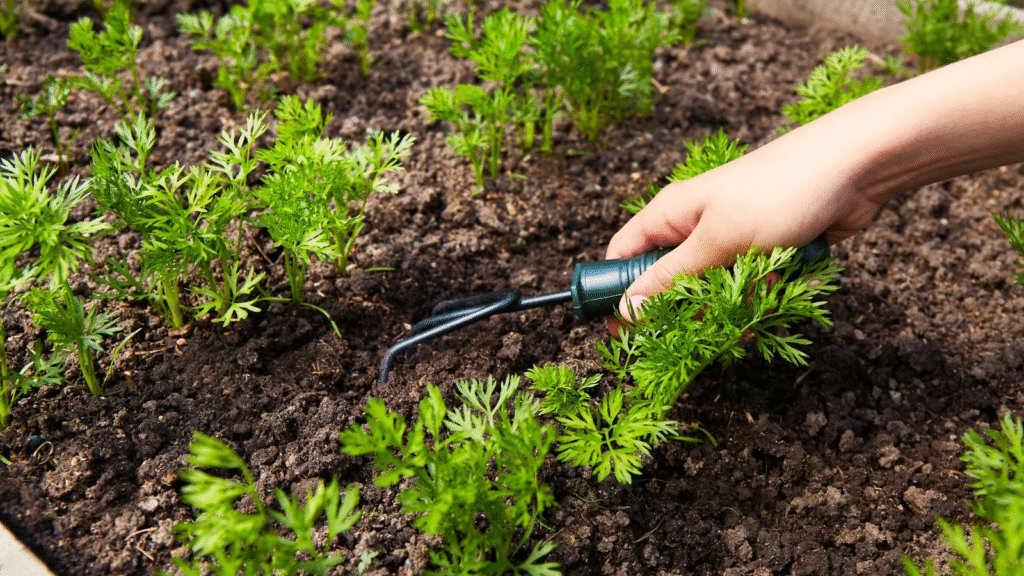
A woman’s hand uses a rake to loosen soil around young carrot seedlings.
Weeds are the biggest hassle—mulch helps keep them away.
These carrots are super low-maintenance, even for total beginners.
The main task? Weeding. They compete for nutrients and water. Mulching around mature plants helps block weeds.
If carrot shoulders pop out of the soil, cover them back up to prevent sunburn (which turns them green and bitter).
Propagation
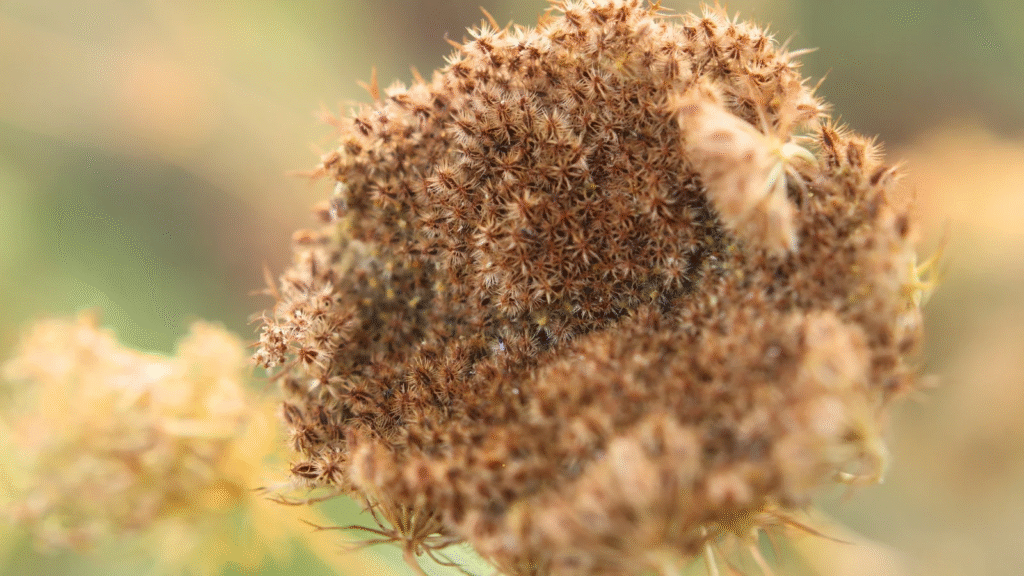
Save seeds to grow more next year.
The easiest way to propagate? Let some plants go to seed. Once flowers dry, clip the seed heads and rub them over a plate or paper towel to collect seeds. Store in a cool, dry place.
You can also regrow greens from carrot tops: Place cuttings in water or on a damp paper towel until roots form. Plant them in soil—but note, they won’t grow new edible roots. Instead, let them flower and collect seeds for future planting.
Harvesting & Storage
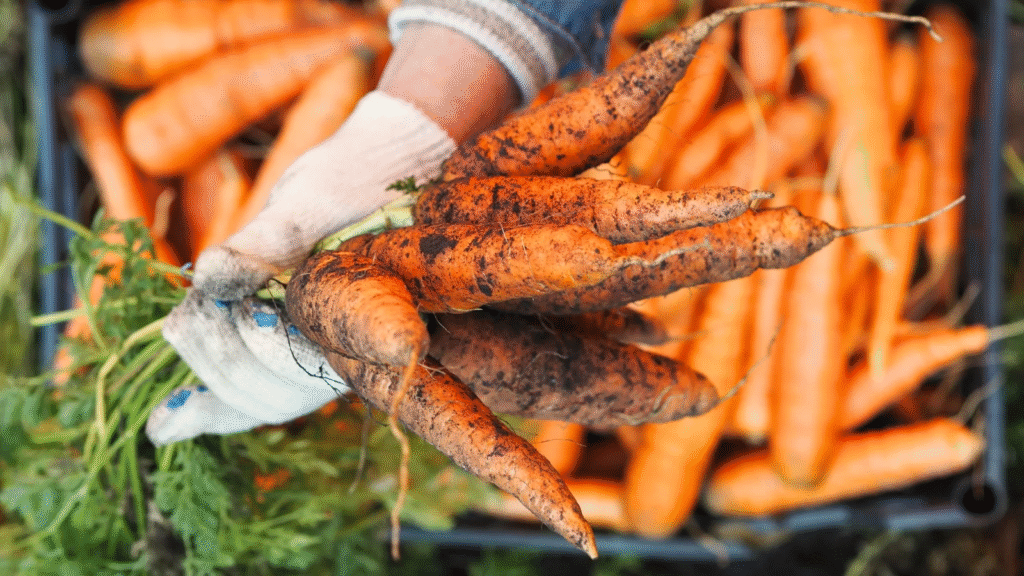
After a good rain, they’ll pull right out.
Harvest whenever they’re mature—young for tender carrots, or let them grow 6+ inches for bigger roots. (I love harvesting young and using the greens in salads and pesto!)
Best time to harvest? After rain or watering. Gently pull by the foliage or use a garden fork. If the soil’s moist, they’ll come out easily.
Storage tips:
- Fridge: Lasts weeks in plastic bags.
- Freezer: Blanch first for longer storage.
- Pickling: Preserve them in vinegar, salt, and spices for tasty pickled carrots.
Common Problems
Danvers carrots rarely have major issues. With good soil and a healthy garden, you shouldn’t face many troubles.
The most common issue? Sunburn—when carrot tops poke out of the soil and turn green from sunlight, making them bitter and tough.
Pests
A tiny, wedge-shaped leafhopper rests on a carrot leaf.
Remove infected plants fast to stop leafhopper damage.
Watch for:
- Leafhoppers: Spread Aster Yellows disease (causing hairy roots and yellow leaves). Remove infected plants ASAP. Mulch and encourage beneficial insects to keep them away.
- Root maggots: Burrow into roots, causing holes and wilting. Worse in damp, cool conditions.
- Root-knot nematodes: Cause gnarled, inedible roots. Prevent by rotating crops yearly.
Diseases
A hand holds an orange carrot with black rotted spots from Alternaria black root rot.
Dark spots on roots? Act fast to save them.
Possible diseases:
- Bacterial leaf blight: Yellow leaf spots, curling, then black growth.
- Black root rot: Fungal disease from soggy soil—roots turn brown/black and rot.
- White mold: Late-season mold on roots. Prevent with crop rotation and proper spacing.
- Alternaria leaf blight: Green-brown lesions on leaves, leading to plant death.
Prevention tips:
- Avoid overhead watering (use drip irrigation).
- Space plants for good airflow.
- Rotate crops yearly.
- Dip seeds in hot water before planting (or buy disease-free seeds).

